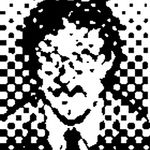- Home
- Illustrator
- Discussions
- Re: PDF layers not showing in Illustrator
- Re: PDF layers not showing in Illustrator
PDF layers not showing in Illustrator
Copy link to clipboard
Copied
I have hundreds of vector-based PDF files exported from ArchiCAD that I need to batch convert to SVG using Illustrator. The problem is that there are a number of shapes that the draftsman has included in a special layer in ArchiCAD that are not coming through to Illustrator.
When I open the PDF files in Acrobat and turn on the layers panel, I can see the various layers from ArchiCAD including the one containing the special shapes. When I open this PDF file in Illustrator (latest version 2017), I just get one layer called "Layer 1" with all the objects in it. Why doesn't Illustrator display the layers like Acrobat is able to do?
I also need to be able to get rid of all the damn clipping masks that come with the PDF files. We programmatically identify certain closed shapes but when they are inside a clipping mask, our routines can't find them.
Thanks in advance.
Paul
Explore related tutorials & articles
Copy link to clipboard
Copied
Paul,
Is Paste Remembers Layers ticked in the Layers palette flyout in the new receiving document?
Do you use File>Place?
Copy link to clipboard
Copied
Hi Jacob, I'm not using Place. I'm opening the PDF files in Illustrator. I tried a Place, then embed and got the same outcome. It's the nature of the PDF file and Illustrator's inability to see the layers in it. In Acrobat, all the separate CAD layers are there. It's frustrating to know that this information is in the file but in order to get an SVG file at the end, we need to go through Illustrator.
Copy link to clipboard
Copied
As Ton said, Illustrator isn't a PDF editor, and PDF isn't intended as exchange format between different applications. Illustrator will attempt to convert objects in a PDF created by another application into native elements, but you should no more expect it to do this 'cleanly' as you would expect ArchiCAD to open a PDF created by Illustrator 'cleanly'.
If they're hidden Acrobat layers, you could try making them visible in Acrobat and resaving. That may be scriptable.
Copy link to clipboard
Copied
Hi Danny, I know Illustrator isn't a native PDF editor and I'm not expecting miracles, just trying to find a way through this problem. The layers and their objects aren't hidden, they're just all lumped into 1 layer. As Ton, mentioned, PDF layers aren't like Illustrator layers so they're not going to translate.
Thanks everyone for your time.
Paul
Copy link to clipboard
Copied
Ah. It's a pity Acrobat can't export to SVG. It might still play a part, though. It could be long-winded (or scriptable), but you might be able to save separate PDFs of each layer then place them in Illustrator and export to SVG. I'd be nervous, though!
Or might there be a better stepping stone than PDF to get from ArchiCAD to SVG?
Copy link to clipboard
Copied
Can I presume that the CAD “layers” are actually tool/pen palettes? Such as all of the “cut” paths are on a “layer” and all of the “crease” paths are on another “layer” etc? Different apps use different terms that can confuse the issue. If so, these “layers” will export to separate colours. An Illustrator action (slow) or script (fast) could be used to select all objects in a certain colour and to then move them to a corresponding layer. Keep in mind that having these elements in different Illustrator layers will change their stacking order, so care should be taken (unlike PDF OCG “layers” which do not affect stacking order).
Copy link to clipboard
Copied
Illustrator is not a generic PDF editor. I t can open it's own PDF's only correctly when the "Preserve Illustrator Editing Capabilities" is checked during saving.
"Layers" in a PDF are not the same as Layers in Illustrator or InDesign, they are not real layers, but Optional Content Groups and are a way of organizing objects to show or hide them in a PDF file.
Copy link to clipboard
Copied
I am having the same problem. After exporting the Autocad file to PDF it can open fine on Acrobat with all the layers. However on Illustrator the layers merge to one.
One way to go around this is to open the .dwg file with Rhino and then export to .ai(.pdf could work as well I think) then the layers are displayed.
Any other way around this would be useful.
Copy link to clipboard
Copied
You can open the dwg file in illustrator directly without going via Rhino.
You need to save the dwg back into the 2004 dwg format in autocad.
In illustrator choose file>open and select the dwg-file. You will get an option for choosing what scale to import in into illustrator.
Find more inspiration, events, and resources on the new Adobe Community
Explore Now
